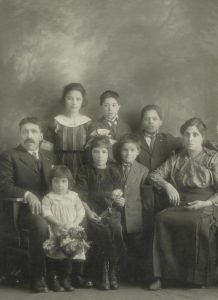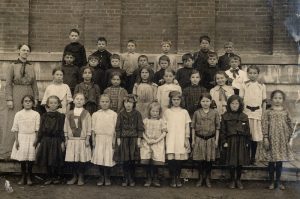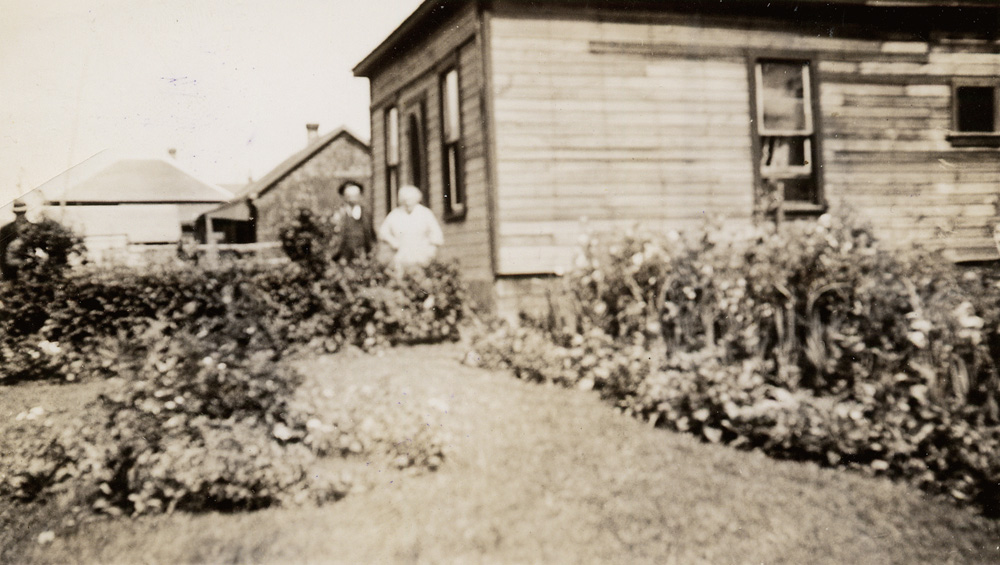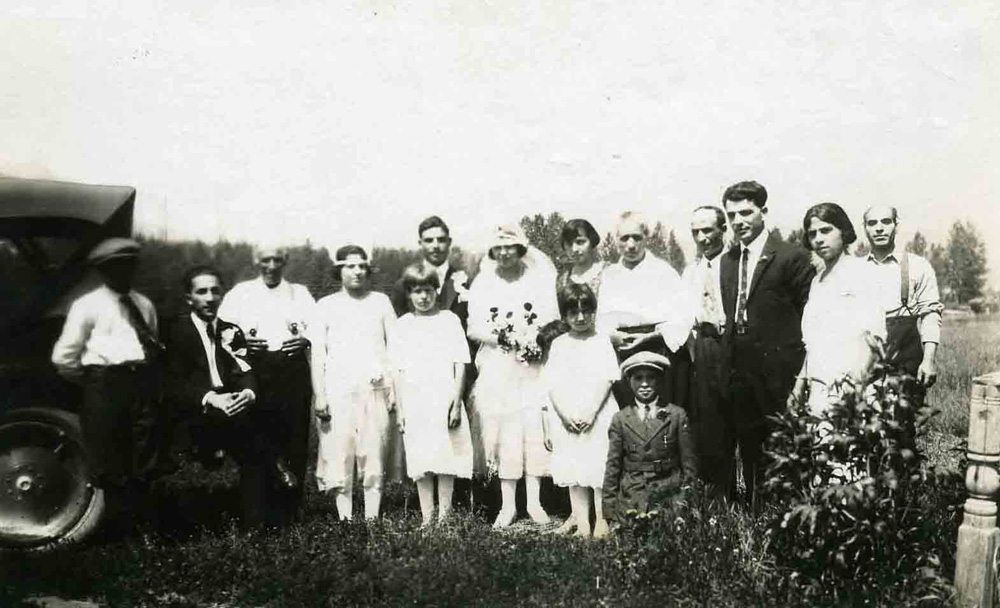Italian Cultural Life

The Migale (Megale and other variants) family, ca 1921. Large families were the norm not only in the Italian community but also other immigrant communities. Raffaele Migale arrived in Fernie in 1898 and worked in the mines.
While Italian immigrants arriving in the Elk Valley, BC brought few possessions, they were rich in customs and traditions. Seasonal gatherings around the harvest, the killing of pigs to make home-made sausages and prosciutto, wine and grappa-making, all of these things made their new homes more like the homeland they had left behind.
Men with families invited single or married friends whose wives were still in Italy into their homes for feast days and celebrations, and boarding houses became a home-away-from-home. Music was part of these gatherings, and Italian musicians made up a significant portion of any colliery band.

Fernie Public School with teacher and 32 students, ca 1915. The back of the picture has some student names including some Italian children.
Not all were church-goers but, for those who were, the church was another way of becoming rooted. Since many Italian traditions were based on seasonal religious festivals with prescribed foods – Pasqua (Easter) and Natale (Christmas) being the most important – even non-believers took part to enhance their sense of belonging.

House and garden, Fernie, BC. The typical wood frame house in Fernie, BC surrounded by a garden. Most families grew vegetables to enhance their diets and to leave money to buy necessities. Louis Carosella’s garden was particularly renowned.
The elders, the nonnos and nonnas (grandfathers and grandmothers), used story to pass on traditions to the next generation. They also kept track of who was related to whom and arranged marriages with suitable families. Individual identity was rooted in family and was tied to the land. Members of Fernie’s Italian community including Louis Carosella were renowned for their lush gardens.
This was also an era of hunting and fishing, essential to filling the family larder when work was scarce and hunger was not far from the door.

Wedding of Mike Pascuzzi and Louisa Costanzo. The picture was taken at Costanzo’s Ranch in Cokato, 1925. Weddings were celebratory occasions that brought the Italian community together.
Audio clip with transcript: “Betty and Angelo Schianni Oral History | Italian Gardens (00:55)”
Audio clip with transcript: “Violet Minfie Oral History | Italian Families (01:07)”

